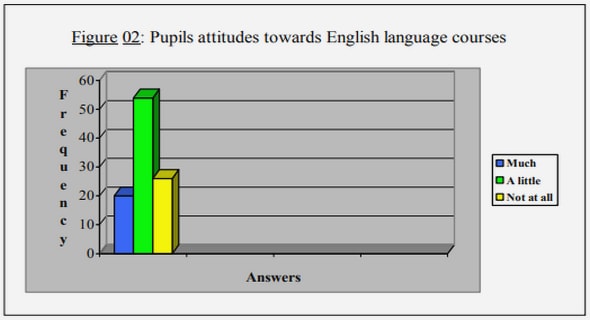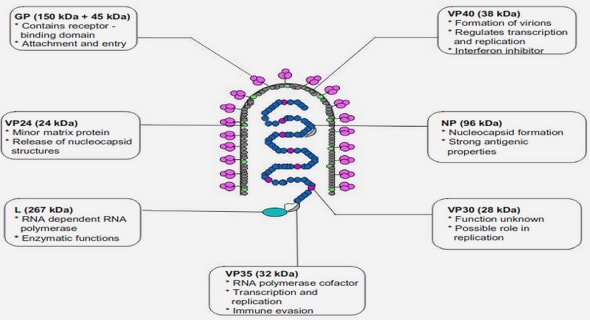Get Complete Project Material File(s) Now! »
Study site and sampling design
We sampled three trees which belonged to a full-sib family of Quercus robur L. planted for a field experiment established in 2000 at INRA-Bourran, located in the South-West of France (44°19’43” N, 0°25’26” W) (Scotti-Saintagne et al., 2004).
These trees were previously characterized as highly susceptible, intermediately resistant or strongly resistant to powdery mildew based on five years of visual observations (Desprez-Loustau M-L, personal communication). They were located within 5 m from one another and were thus expected to experience similar environmental conditions. On the 29th of July 2011, we collected 10 leaves each from four branches at approximate height of 2 m, resulting in 40 leaves per tree. The leaves taken were evenly spaced between the trunk and the tip of the branch. We collected leaves strictly from the first flush. We measured the powdery mildew infection level as the proportion of the upper leaf area displaying the symptoms. We also measured the position of each leaf within the canopy: its distance to the ground, to the base of the branch, to the tree trunk and the orientation of the branch (South-West versus North-East). Each leaf was then cut at the base of the petiole and placed into a sterile bag containing silica gel. The bags, sealed and made airtight, were then stored in dark at +18°C in the laboratory. A preliminary experiment had been performed to assess the effect of oak leaf storage in silica gel on the fungal community composition inferred by 454 pyrosequencing. We did not find any significant difference between the communities of fresh leaves and leaves stored in silicagel (Methods S1 2.7 on page 68).
Leaf DNA extraction
Leaf DNA extraction was performed three months after the sampling date. We prepared the leaf material for the DNA extraction in a laminar flow hood. In order to avoid contaminating the samples, the hood and all tools were disinfected with sodium hypochlorite followed by 70% ethanol and 40 min of UV exposure. Plastic ware and tungsten carbide beads were autoclaved for 2 h prior to utilization. Similarly, the tools used for leaf handling were sterilized prior to each use, by dipping them into 70% alcohol and flaming over an electric bunsen burner. Using a metal corer we excised two discs of 0.5 cm 2 each on both sides of the middle leaf vein. The four discs were evenly distributed on the leaf, with their position not being chosen according to E. alphitoides symptoms. The four leaf discs were placed in a collection microtube (QIAGEN DNeasy® 96 Plant Kit) containing one tungsten carbide bead. We used Geno/Grinder® (SPEX SamplePrep, Metuchen, NJ, USA) to homogenize the leaf material at 1 600 strokes per minute for 90 s. Homogenized samples were stored at -80 °C overnight. We used QIAGEN DNeasy 96 Plant Kit to extract the DNA (following the protocol for frozen plant tissue). We determined the DNA concentration with NanoDrop 8000 and diluted all DNA working solutions to 1 ng ml.
Processing of the fungal 454 pyrosequencing data
We used QIIME v.1.7.0 (Caporaso et al., 2010) for quality filtering, demultiplexing, and denoising. After the removal of tags and primers, all sequences shorter than 100 nucleotides were discarded. Quality filtering was done with a sliding window test of quality scores having a window size of 50 nucleotides and a minimum quality score of 25. The sequences were truncated at the beginning of the poor quality window and tested for the minimum sequence length of 100 nucleotides. BeCHAPTER cause the highly conserved ribosomal genes flanking the ITS1 marker may distort sequence clustering and similarity searches, we removed these from the dataset using Fungal ITS Extractor 1.1 (Nilsson et al., 2010). ITS1 sequences shorter than 100 nucleotides were discarded and sequences longer than 280 nucleotides were trimmed at the 3’-end. Before the clustering step we combined the dataset with a larger, unpublished 454 fungal dataset acquired by sampling leaves on 203 oak trees planted in the same field test. In doing so we aimed to reduce the number of singletons. We discarded singleton reads before clustering to minimize spurious Operational Taxonomic Units (OTUs). OTU clustering was done with UPARSE-OTU (Edgar, 2013), an algorithm implemented within Usearch v.7 (Edgar, 2010) that performs chimera filtering and OTU clustering simultaneously. The algorithm identifies a set of OTU representative sequences at the 97% sequence similarity threshold, that corresponds roughly to the differences at the species level (Nilsson et al., 2008). Unfortunately, other Erysiphe species, such as E. quercicola and E. hypophylla, have an ITS sequence which has less than a 3% difference from the E. alphitoides ITS sequence (Mougou et al., 2008). ITS sequences of these species therefore cluster together at 97% similarity threshold. To circumvent this issue we performed a BLAST search of all sequences against a custom taxonomic database of the Erysiphe genus. We extracted all sequences with successful hits to E. alphitoides into a separate file, and assigned the corresponding read counts. Taxonomy assignments were done by BLAST searches against Fungal ITS Database (Nilsson et al., 2009) (as of March 15, 2012). We modified the taxonomic file associated with this database to equalize the length of taxonomic ranks, by using the NCBI Taxonomy Browser. Additionally we corrected a few false taxonomic assignments in the case of Erysiphe species and removed a few non-fungal sequences. We used this database to assign the taxonomy to the most abundant sequence of each OTU, using QIIME (v.1.7.0) with standard settings (BLAST searches, e-value: 0.001, minimum percent identity: 90). To exclude possible Q. robur sequences, we also compared the most abundant sequence of each OTU with the sequences deposited in GenBank, using the BLASTN algorithm (Altschul, 1990). We then constructed the OTU table in QIIME and transformed it from BIOME into tab delimited text format for downstream analyses with R (R Core Team, 2013).
Relationship between the level of infection by E. alphitoides and the composition of foliar microbial communities
Analysis of leaves within the susceptible tree also showed that the level of infection by E. alphitoides was significantly related to fungal community composition. The percentage of E. alphitoides reads had a significant effect on the variable comp1 (GLM; F=13.56, df1=1, df2=37, p<0.001) but not comp2 (GLM; F=0.79, df1=1, df2=37, p=0.39). Variations in the percentage of E. alphitoides reads thus explained compositional variations observed along the first axis of the PCA (Figure 3 on page 55).
Highly infected leaves harbored a higher abundance of OTU 3 (taxonomically unassigned; contributing to 23.6% of the compositional variations along the first PCA axis) and OTU 26 (assigned to Taphrina carpini; 1.4%). Leaves with low abundance of E. alphitoides were divided into two groups differing in their fungal community composition. The first group had a high abundance of OTU 1 (assigned to Naevala minutissima; 4.6%), OTU 10 (unassigned; 2.4%), and OTU 19 (unassigned; 6.3%). The second group had a high abundance of OTU 1278 (assigned to Mycosphaerella punctiformis). This latter species was the main driver of variations in fungal community composition. Its contributions to the first and second axis of the PCA equaled 58.5% and 34.7%, respectively. Pearson correlations between OTUs relative abundances showed that it is significantly, negatively associated to the pathogen E. alphitoides (r=-0.40; p-val=0.01). Analyses of associations between fungal OTUs and leaf type (highly infected by E. alphitoides versus « uninfected ») confirmed these results. OTU 3 and OTU 26 were significantly associated to highly infected leaves (phi=0.38, p-val=0.02 and phi=0.33, p-val=0.03, respectively), while OTU 1278 and OTU 19 were significantly associated to uninfected leaves (phi=0.39, p-val=0.01 and phi=0.39, p-val=0.007, respectively).
DNA extraction and fungal communities sequencing
On the 20th of July 2011, foliar disks were excised from the dried leaves as described in the present article. Then they were ground by using Geno/Grinder® (SPEX SamplePrep, Metuchen, NJ, USA) at 1 300 strokes per minute for 180 s. DNA was then extracted from all samples using the QIAGEN DNeasy® 96 Plant Kit. Several frozen samples (belonging to the same branch) were lost at this stage. Amplification of the fungal ITS1 region and purification of the PCR products was then performed as described in Coince et al. (2014). The purified PCR products were quantified (NanoDrop) and pooled in equal proportion at the branch level, resulting into 8 samples (2 FF, 3 SS and 3 SC). 454 pyro-sequencing of these samples and 26 others was then performed at the Centre de Génomique Fonctionnelle de Bordeaux (CGFB, Bordeaux, France) on one run of a GS-Junior sequencer (454 Life Sciences, Brandford, CT, USA) . Bioinformatic analysis was performed with QIIME 1.6.0 (Caporaso et al., 2010) following the same procedure as Cordier et al. (2012), with an additional step of sequence denoising performed by using the function denoise.wrapper.
Amplification and sequencing of the fungal assemblages
To characterize the fungal assemblages on oak leaves we targeted the internal transcribed spacer 1 (ITS1) sublocus of the ITS region of the nuclear ribosomal repeat unit (Schoch et al., 2012). The PCR reactions were pipetted under a laminar flow hood using the same disinfection protocol as for the DNA extraction. The PCR reactions (50μl) contained 2.5 units Silverstar Taq polymerase (Eurogentec), 5μl 10x PCR buffer supplied by the manufacturer, 2μl MgCl2 (50mM), 2μl dNTPs (5mM), 1μl of 10μM forward primer, 1μl of 10μM reverse primer, 0.5μl of 100mg/ml BSA, and 5ng DNA template. The PCR reaction was carried out as follows: an initial phase at 95ºC (5 min), followed by 35 cycles at 95ºC (30 sec), 54ºC (60 sec) and 72ºC (90 sec), and a final step at 72ºC (10 min). Samples (leaf as a sample unit) were amplified in triplicate and pooled before purification with AMPure magnetic beads (Beckman Coulter Genomics, Danvers, MA, USA). The DNA concentration in each sample was quantified using Nanodrop8000 (Thermo Fischer Scientific,Waltham, MA, USA) and pooled to an equimolar concentration to obtain the amplicon libraries, five in total.
The final DNA libraries were sequenced (unidirectional, starting with A adaptor) on 454 GS Junior sequencer(454 Life Sciences, Branford, CT, USA) at the Centre de Génomique Fonctionelle de Bordeaux (CGFB, Bordeaux, France).
Table of contents :
1 Introduction
1.1 Community genetics
1.2 The phyllosphere
Definition of the term
Topography and microclimatic conditions
Microbial inhabitants of the phyllosphere
Microbiota functions in the phyllosphere
1.3 Plants strategy to cope with the diversity of biotic interactions might
select for specific networks of interacting species in the associated communities
1.4 Powdery mildew
1.5 Metabarcoding for studying microbial community
Fungi
Bacteria
1.6 Objectives of this work
1.7 Bibliography
2 Deciphering the pathobiome
2.1 Introduction
2.2 Material and methods
Study site and sampling design
Leaf DNA extraction
Amplification and sequencing of the fungal assemblages
Amplification and sequencing of the bacterial assemblages
Processing of the fungal 454 pyrosequencing data
Processing of the bacterial Illumina data
Statistical analyses
2.3 Results
Taxonomic composition of oak foliar microbial communities
Relationship between the abundance of powdery mildew symptoms
and the number of reads assigned to E. alphitoides
Relationship between the level of infection by E. alphitoides and the
composition of foliar microbial communities
Inferred interactions between E. alphitoides and other members of the
foliar community
2.4 Discussion
2.5 Acknowledgements
2.6 References
2.7 Supplementary methods S1 – Preliminary experiment aimed at assessing the effect of oak leaf storage on fungal community composition.
Study site and sampling design
DNA extraction and fungal communities sequencing
Statistical analyses
Results
Discussion
References
3 QTLs for microbial community descriptors
3.1 Introduction
3.2 Material and Methods
Experimental site and leaf-sampling design
DNA extraction
Amplification and sequencing of the fungal assemblages
Amplification and sequencing of the bacterial assemblages
Processing of the fungal 454 pyrosequencing data
Processing of the bacterial Illumina data
Construction of foliar microbial networks
Choice of traits for QTL analysis
Genotyping and map construction
Number and type of markers
QTL analysis
3.3 Results
Sequencing data
Fungal data
Bacterial data
Correlation among traits
Chromosomal loci for the microbial community descriptors (QTLs) .
3.4 Discussion
3.5 Bibliography
4 Association mapping study
4.1 Introduction
4.2 Material and Methods
Population structure and Sampling
DNA extraction
Amplification and sequencing of the fungal assemblages
Amplification and sequencing the bacterial assemblages
Processing of the fungal Ion Torrent sequencing data
Processing of the bacterial Illumina sequencing data
Statistical analysis and choice of traits
4.3 Results
Sequencing data
Fungal data
Bacterial data
Differences between maternal and offspring trees
4.4 Discussion
4.5 Bibliography
5 General discussion
5.1 Recapitulation of the major findings
5.2 Possible evolutionary mechanisms
5.3 Bibliography
6 Appendix 122
6.1 Appendix A – An evolutionary ecology perspective to address forest pathology challenges of today and tomorrow
6.2 Appendix B – Learning Ecological Networks from Next-Generation Sequencing Data
6.3 Appendix C – Résumé en français


